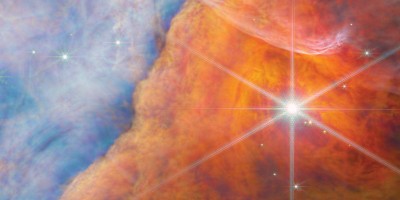Computer use in astronomy continues to increase, and so also its impact on the environment. To minimize the effects, astronomers should avoid interpreted scripting languages such as Python, and favour the optimal use of energy-efficient workstations.



References
Ossendrijver, M. Science 351, 482–484 (2016).
Stevens, A. R. H., Bellstedt, S., Elahi, P. J. & Murphy, M. T. Nat. Astron. https://doi.org/10.1038/s41550-020-1169-1 (2020).
Achten, W. M., Almeida, J. & Muys, B. Ecol. Indic. 34, 352–355 (2013).
Portegies Zwart, S. & McMillan, S. Astrophysical Recipes: The Art of AMUSE (IOP Publishing, 2018).
Paxton, B. et al. Astrophys. J. Suppl. Ser. 192, 3–38 (2011).
Portegies Zwart, S. F. & Verbunt, F. Astron. Astrophys. 309, 179–196 (1996).
Gaburov, E., Bédorf, J. & Portegies Zwart, S. Procedia Comput. Sci. 1, 1119–1127 (2010).
Barnes, J. & Hut, P. Nature 324, 446–449 (1986).
Hofmann, J., Hager, G. & Fey, D. P. In High Performance Computing (eds Yokota, R. et al.) 22–43 (Springer, 2018).
Feng, W. & Cameron, K. Computer 40, 50–55 (2007).
Van Rossum, G. & Drake, F. L. Jr Python Reference Manual (Centrum voor Wiskunde en Informatica, 1995).
Pereira, R. et al. In Proc. 10th ACM SIGPLAN Int. Conf. on Software Language Engineering SLE 2017 256–267 (Association for Computing Machinery, 2017).
Lam, S. K., Pitrou, A. & Seibert, S. In Proc. Second Workshop on the LLVM Compiler Infrastructure in HPC LLVM ’15 1–6 (Association for Computing Machinery, 2015).
Oliphant, T. E. A Guide to NumPy Vol. 1 (Trelgol Publishing, 2006).
Portegies Zwart, S. F., Belleman, R. G. & Geldof, P. M. New Astron. 12, 641–650 (2007).
Bédorf, J. et al. In Proc. Int. Conf. for High Performance Computing, Networking, Storage and Analysis SC ’14 54–65 (IEEE, 2014).
Advanced LIGO Reference Design: LIGO M060056-v2 (LIGO Scientific Collaboration, 2011).
D’Addario, L. in Proceedings of Exascale Radio Astronomy 302.01 (American Astronomical Society, 2014).
Heggie, D. C. & Mathieu, R. D. in The Use of Supercomputers in Stellar Dynamics (eds Hut, P. & McMillan, S. L. W.) 233–235 (Springer, 1986).
Wittmann, M., Hager, G., Zeiser, T., Treibig, J. & Wellein, G. Concurr. Comput. Pract. Exper. 28, 2295–2315 (2016).
Heinrich, F. C. et al. in IEEE International Conference on Cluster Computing 92–102 (IEEE, 2017).
Hunter, J. D. Comput. Sci. Eng. 9, 90–95 (2007).
Cutress, I. The Intel Xeon W-3175X review: 28 unlocked cores, $2999. AnandTech https://www.anandtech.com/show/13748 (30 January 2019).
Portegies Zwart, S. & Boekholt, T. Astrophys. J. Lett. 785, L3–L7 (2014).
Acknowledgements
I thank A. Allen for providing data on the ASCL language usage and L. Butscher for comments and inviting me to present this discussion at the 2020 European Astronomical Society conference. Part of this work was performed using resources provided by the Academic Leiden Interdisciplinary Cluster Environment (Alice), TITAN (LANL) and LGM-II (NWO grant number 621.016.701) We used the Python, Matplotlib, NumPy, Numba and AMUSE open-source packages.
Author information
Authors and Affiliations
Corresponding author
Ethics declarations
Competing interests
The author declares no competing interests.
Rights and permissions
About this article
Cite this article
Portegies Zwart, S. The ecological impact of high-performance computing in astrophysics. Nat Astron 4, 819–822 (2020). https://doi.org/10.1038/s41550-020-1208-y
Published:
Issue Date:
DOI: https://doi.org/10.1038/s41550-020-1208-y
- Springer Nature Limited
This article is cited by
-
GREENER principles for environmentally sustainable computational science
Nature Computational Science (2023)
-
A species-level timeline of mammal evolution integrating phylogenomic data
Nature (2022)
-
FAIRly big: A framework for computationally reproducible processing of large-scale data
Scientific Data (2022)
-
The carbon footprint of astronomy research in the Netherlands
Nature Astronomy (2021)
-
Reducing the ecological impact of computing through education and Python compilers
Nature Astronomy (2021)


